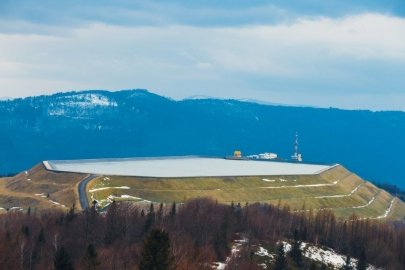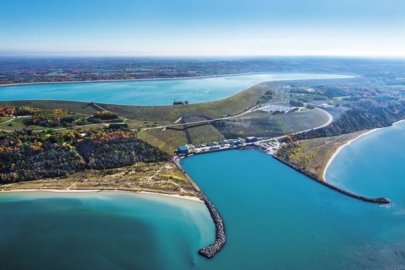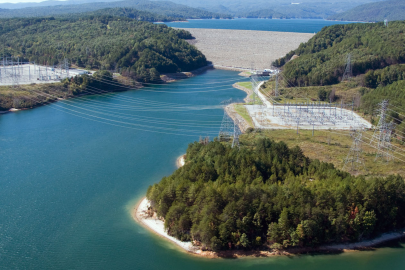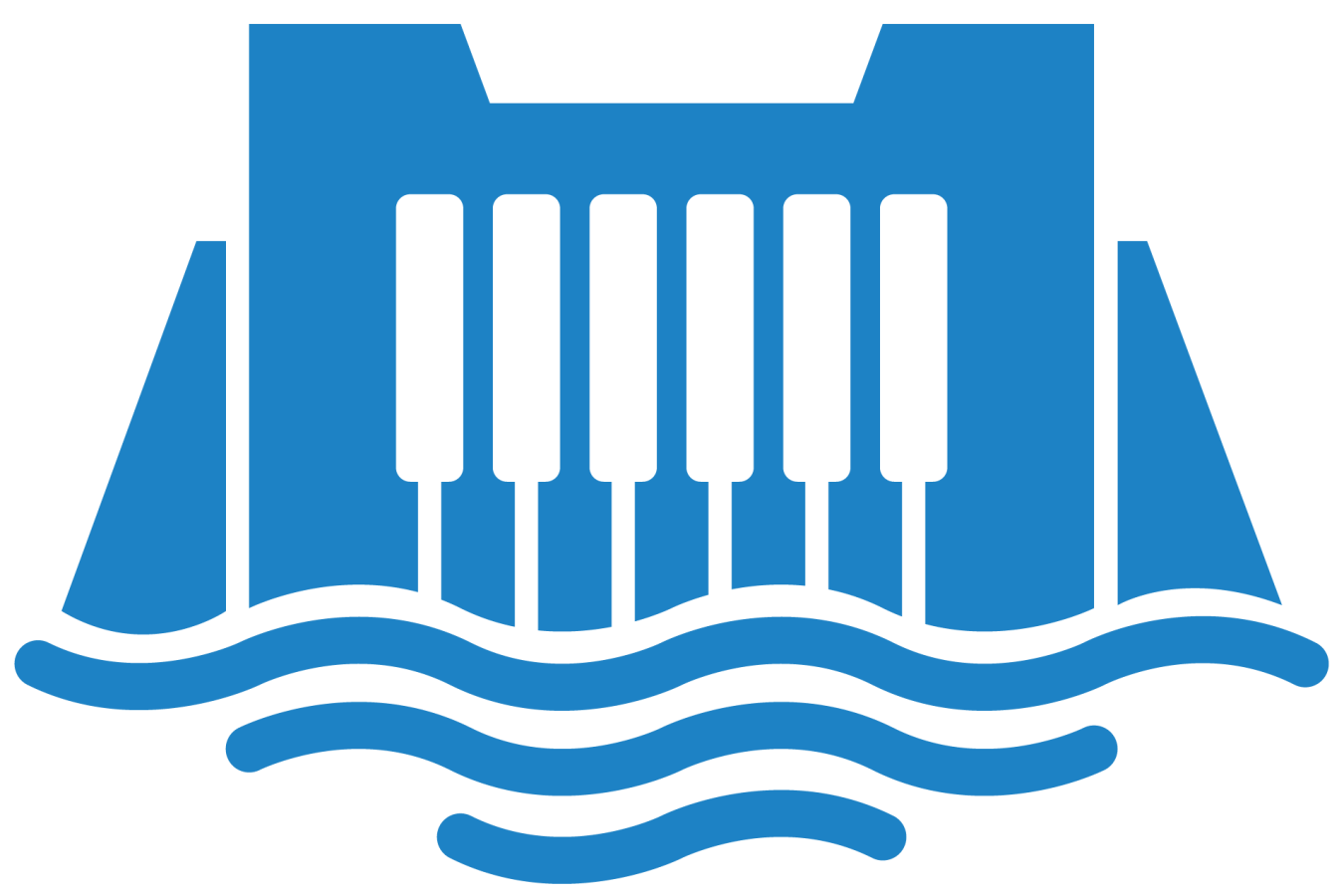A General Electric Research-led team demonstrated a new hydropower turbine design and monitoring methodology that allows plant operators to adjust power output in a few seconds to meet energy demand without needing to start or stop units.
Water Power Technologies Office
March 1, 2023Grid Reliability, Resilience, & Integration (HydroWIRES)
Project Name: Increasing Operational Flexibility of Francis Turbines at Low-Head Sites, Through Analytical and Empirical Solutions
Project Team: General Electric Research (lead), Eagle Creek Renewable Energy, and General Electric Renewable Energy
Lead Recipient Location: Niskayuna, New York

The General Electric Research-led team demonstrated a new hydropower turbine design and operating approach that allows plant operators to adjust power output in a few seconds to meet energy demand without needing to start or stop units, which can take up to 90 seconds. Historically, hydropower units are mainly operated close to their nominal power output and, when power demand changes, plant operators must start or stop units.
The team’s approach to design and subsequently operate Francis hydropower turbines at low-head sites increases facility flexibility (or its ability to quickly respond to changes in power demand), as well as oxygen levels in water. Francis turbines are the most commonly used in the world for hydropower generation, and for this project, low-head hydropower facilities are defined as those with 80 meters or less of height differential between the water intake and discharge.
The team’s solution relies on a new turbine hydraulic design and a monitoring methodology to unlock new hydropower plant operation strategies. This methodology leverages detailed measurements onsite and on the test bench along with numerical simulations to assess the exact behavior of the turbine and its capability to operate in a fully flexible way, far from its nominal output.

The increased flexibility gained by implementing the new methodology, combined with design changes made when manufacturing new Francis turbines, will enable facilities to generate power over a wider operating range, as demonstrated during a test at High Rock powerplant, operated by Eagle Creek. The operating range at hydropower plants that utilize Francis turbines is determined by the amount of water discharged, which correlates to output power. Being able to handle a wide range of water discharge volume means the facility is able to quickly adjust the amount of power it can provide to the grid.
The team developed a methodology that can be applied to any low-head facility using Francis hydropower turbines. If adopted broadly, hydropower operators can not only increase their facility’s flexibility but also fish survival because the new turbine design and monitoring methodology help to increase oxygen levels in water. Moving forward, the project team will continue to improve the methodology so it can be widely deployed.
Grid Reliability, Resilience, & Integration (HydroWIRES) Projects
-
 WPTO launched the H2Os Prize, and innovators competed in two prize phases and developed new solutions that can help advance hydropower’s contributions to the grid.
WPTO launched the H2Os Prize, and innovators competed in two prize phases and developed new solutions that can help advance hydropower’s contributions to the grid. -
 Two national laboratory studies found opportunities to expand and innovate pumped storage hydropower in the United States.
Two national laboratory studies found opportunities to expand and innovate pumped storage hydropower in the United States. -
 Analyses from Argonne National Laboratory and Pacific Northwest Laboratory help hydropower operators and developers better understand how hydropower facilities can integrate and be profitable on the changing electricity grid.
Analyses from Argonne National Laboratory and Pacific Northwest Laboratory help hydropower operators and developers better understand how hydropower facilities can integrate and be profitable on the changing electricity grid. -
 A new optimization model for pumped storage hydropower can help grid operators decide how to distribute a facility’s time between generating power and pumping water to store energy.
A new optimization model for pumped storage hydropower can help grid operators decide how to distribute a facility’s time between generating power and pumping water to store energy. -
 A study on the sustainability of closed-loop pumped storage hydropower identified the technology as a promising solution to grid-scale energy storage.
A study on the sustainability of closed-loop pumped storage hydropower identified the technology as a promising solution to grid-scale energy storage.
WPTO's Hydropower e-newsletter features news on R&D and applied science to advance sustainable hydropower and pumped-storage technologies.
The WPTO e-newsletter brings funding opportunities, events, publications, hydropower, and marine energy updates directly to your inbox.


